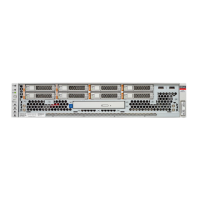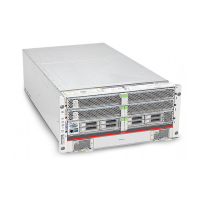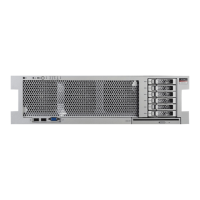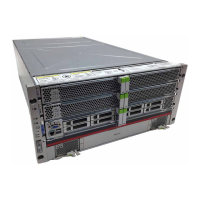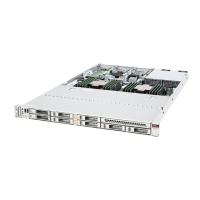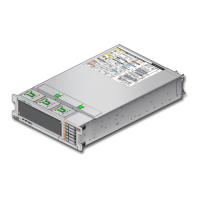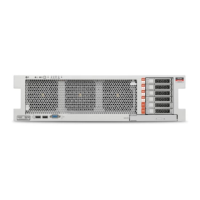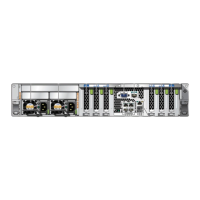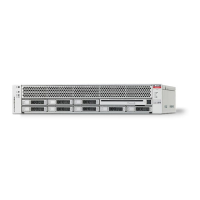8 Netra SPARC T4-1B Server Module Service Manual • June 2012
Flowchart
No. Diagnostic Action Possible Outcome Additional Information
1. Check the Power
OK LED.
If this LED is not lit, check the power source and
ensure that the server module is properly
installed in the modular system chassis.
• “Diagnostics LEDs” on
page 10
2. Run the Oracle
ILOM show
faulty command
to check for faults.
This command displays the following kinds of
faults:
• Environmental and configuration
• PSH-detected
• POST-detected
Faulty FRUs are identified in fault messages
using the FRU name.
All Oracle ILOM detected fault messages begin
with the characters SPT.
• “Service-Related Oracle
ILOM Commands” on
page 22
• “Check for Faults (show
faulty Command)” on
page 18
3. Check the Oracle
Solaris log files for
fault information.
The Oracle Solaris message buffer and log files
record system events, and provide information
about faults.
• If system messages indicate a faulty device,
replace the FRU.
• For more diagnostic information, review the
Oracle VTS report. See number 4.
• “Interpreting Log Files and
System Messages” on
page 23
4. Run the Oracle VTS
software.
• If Oracle VTS reports a faulty device, replace
it.
• If Oracle VTS does not report a faulty device,
run POST. See number 5.
• “Checking if Oracle VTS
Software Is Installed” on
page 27
5. Run POST. POST performs basic tests of the server module
components and reports faulty FRUs.
• “Managing Faults (POST)”
on page 29
• “Oracle ILOM Properties
That Affect POST Behavior”
on page 30
6. Check if the fault is
environmental.
Determine if the fault is an environmental fault
or a configuration fault.
If the fault listed by the show faulty
command displays a temperature or voltage
fault, then the fault is an environmental fault.
Environmental faults can be caused by faulty
FRUs, or by environmental conditions such as
when computer room ambient temperature is
too high, or airflow is blocked. When the
environmental condition is corrected, the fault
automatically clears.
• “Check for Faults (show
faulty Command)” on
page 18
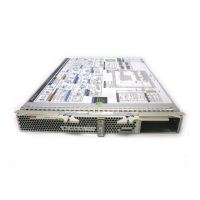
